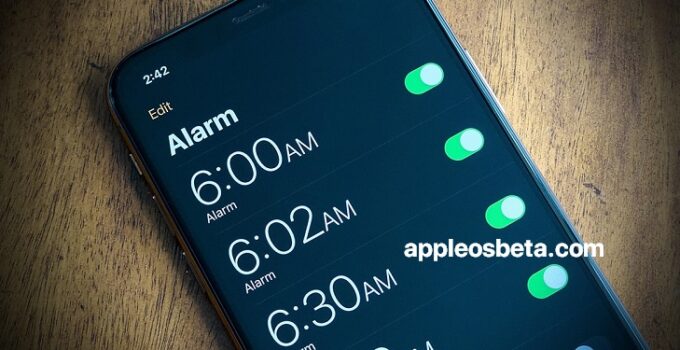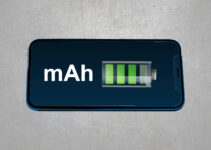Improve sleep quality with iPhone. Sleep is not just necessary for a normal life. Sleep is its basis, without which any undertakings of a person, whether it is work or sports, are much more difficult. In this article, we talked in detail about the benefits of sleep, its phases and, of course, the iPhone’s ability to improve the quality of sleep.
Bloomberg: Apple delayed iPadOS 16. This will be a problem for users
The importance of sleep is underestimated by many.
You rarely meet a person who would consider sleep a waste of time. Everyone is well aware that without sleep, the body begins to work incorrectly, and the malfunction occurs very abruptly. It is enough not to get enough sleep for just a couple of days, as the body will immediately note its dissatisfaction with the current state of affairs. And it will do it in an unpleasant way for a person, reducing productivity and increasing irritability.
What can we say about the systematic lack of sleep. Constant inadequate sleep increases the load on the heart, changes the hormonal background, suppresses the psyche, slows down the brain and metabolic processes, causes nervous excitement, disrupts neural connections in the cerebral cortex and … Here you can list dozens of other negative changes in the body that are caused by improper sleep .
And that’s what a lot of people don’t really know. Some people believe that just enough sleep is enough and do not pay enough attention to the so-called sleep culture. But there are many important aspects, starting from the procedure for going to bed, ending with awakening in the correct phase. The iPhone will help us with tracking and adjusting these aspects, but let’s first figure out how much a person should sleep in order to sleep well and eliminate the possibility of problems due to improper sleep.
How much sleep do you need
It is widely believed that the duration of sleep for an adult should be 7-8 hours a day. In general, such information is true. Scientists from the US National Sleep Foundation conducted a large-scale study and found out the number of hours of sleep that people of different ages need:
- Children (6-13 years old) – 9-11 hours.
- Teenagers (14-17 years old) – 8-10 hours.
- Adults (18-64 years old) – 7-9 hours.
- Seniors (65 and over) – 7-8 hours.
As you can see, regardless of age, it is not recommended for anyone to sleep less than seven hours. At the same time, Charles Kseisler, a professor at the Harvard School of Medicine, noted that sleeping more than expected is no less harmful than not getting enough sleep.
An interesting fact: The longest stay in a dream is for the Swedish Karolina Olson. In 1876, at the age of 14, Caroline hit her head hard and fell into a state of sleep. She slept for 42 years and 42 days, during which her mother took care of her, and after her mother’s death – a neighbor. After waking up, Karolina began to live a normal life, passing away at the age of 88.
I sleep a lot, but I wake up terribly – why?
Even without knowing the statistics and the results of some studies there, many people adhere to the norms – they do not lack sleep and do not oversleep. But why is waking up so hard sometimes?
It’s all about the phases into which human sleep is divided. There are two main phases – REM sleep and non-REM sleep. They go in turn, changing each other throughout the entire time of a person’s sleep and form a single complete cycle. To restore the human body, on average, it is necessary to go through five such cycles in sleep, which, given the cycle duration of about 1-1.5 hours, is about 7-9 hours.
An interesting fact: The generally accepted norms of sleep were not for geniuses. Leonardo da Vinci practiced polyphasic sleep and slept only 2 hours a day (15-20 minutes every 4 hours), Salvador Dali followed a similar strategy, Benjamin Franklin spent no more than 4 hours a day sleeping, and Nikola Tesla could sleep 2- 3 hours a day – so much attracted his experiments.
In the slow phase, the body recovers – cells are renewed, energy reserves are replenished, muscles grow, hormones are released. In the fast one, the work is carried out at the mental level – the nervous system is restored, the memory and other structures of the body are being prepared. It is easiest for a person to wake up in the fast phase, and ideally, so that it almost comes to an end.
And how to follow the phases?
The theory is finally over – the iPhone enters the stage with practical methods, which is a tool for tracking sleep phases. Alas, the ability to monitor sleep phases is not included in the standard set of iPhone functions. However, there are dozens of different apps on the App Store that accurately detect which phase you’re currently in and start waking you as close to REM sleep as possible.
How to fall asleep on time on iPhone?
“Smart” alarm clocks often receive negative reviews, they say, a miracle does not happen and awakening does not become easy. They really can not always work as they should, but this is not their fault. In order for the “smart” alarm clock to work as it should, the person himself also needs to make an effort.
First, fall asleep on time. Direct on the right path and remind you that it’s time to go to bed, so can the iPhone. And this time, no additional applications need to be installed. With the advent of iOS 10, the standard Clock app has a Sleep Mode feature that notifies the user that it’s time to go to bed.
Setting up the “Sleep Mode” function is very simple:
Step 1: Launch the Clock app on your iPhone, iPad, or iPod touch.
Step 2. Select the “Sleep Mode” tab and click “Proceed” to enter the option settings screen.
Step 3. Specify the time you want to get up, for example, 7 am.
Step 4. Check the boxes for the days you want the alarm to go off.
Step 5. Enter the number of hours you need for a good night’s sleep.
Step 6. Set the time for which the function will notify you to go to bed and select the alarm signal.
In fact, the “Sleep Mode” function is a “smart” alarm clock. But unlike alternatives from the App Store, it does not count sleep phases and will wake you up exactly at the specified time. However, setting up an alert to get ready for bed using the function is worth it – it’s very simple and convenient.
And secondly, a whole hour before going to bed, that is, before the notification you set in the previous way, you should not use your iPhone, iPad, computer, or any other gadgets. Many people can hardly imagine this, because we are all so used to playing before going to bed, reading a book, watching our favorite series or television channel. However, if you are seriously thinking about the normalization of sleep time, you will have to forget about such entertainment.
By replacing watching a series or watching a Twitter feed with a walk, you will greatly facilitate the task of your body. And, importantly, you will fall asleep exactly at the allotted time set in the “Sleep Mode” function. A “smart” alarm clock will open 100% in such conditions and you will definitely notice that you wake up easier and feel better.
If you can’t deny yourself watching a series or reading a book before going to bed, for example, due to the fact that free time appears only closer to the night, set up your iPhone correctly. First, enable the Night Shift option in Settings → Display & Brightness → Night Shift. The function will make the light of your iPhone display warmer and reduce its harmful effects on both the eyes and the body as a whole.
Second (and most important) – lower the brightness of the iPhone display below the minimum. Even at the minimum basic brightness, the iPhone screen is very bright at night and this does not allow the body to relax and get ready for sleep. Fortunately, you can set the brightness below the minimum:
Step 1: Go to Settings → General → Accessibility.
Step 2. Select the “Display Adaptation” section and activate the “White Point Down” switch.
Step 3. Set the option rate to 90-100%. You will definitely notice changes on the display.



